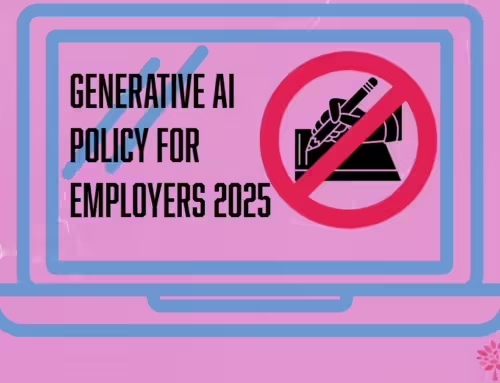NOTE
The Government Job Retention Scheme is designed to reduce the need for redundancy, therefore Tribunals are likely to take a dim view on any employer that leaps to redundancy whilst the furlough scheme is still operational, where there was a mechanism to delay the need to end employment and protect income for workers. Therefore, the general guidance is that consultation can take place during the furlough, but employment should ideally not be terminated whilst furlough is still viable to avoid potential claims for unfair dismissal.
Consultation
All employers have a duty to consult in cases of redundancy – if less than 20 there is no minimum consultation period, but any consultation should be fair and reasonable. If you plan to make 20 or more redundant within a 90 day period then you must undertake collective consultation for at least 30 days, and if more than 100 then the collective consultation time frame is 45 days.
There are no rules that say employees cannot be consulted with during periods of furlough.
NOTE – if you are planning to make 20 or more people redundant your should also complete form HR1
What should consultation look like?
There are no hard and fast rules around what consultation should look like – it needs to be meaningful (i.e two way) and reasonable in the circumstances. Consultation can include email notifications, but it would very wise to factor in 1-2-1 calls or meetings as well so that employees have the chance to talk about the actions you are proposing and can fulfil their right to be accompanied/represented.
If an employee is furloughed, they should still be available to interact with their employer – you are not asking them to work, but it would reasonable for them to take calls or attend virtual meetings.
If an employee refuses to participate in the consultation, you cannot force an employee to engage, but you can generate evidence to suggest you have tried if the decision is challenged in the future.
How to determine who needs to be consulted with?
This follows normal redundancy procedures in that you have to justify why one employee has been selected over another, so normal process is to identify an ‘at risk’ group of employees and have a methodology for identifying why they are at risk and why others are not.
There are several reasons as to why someone may be at risk and the common ones are:
1. Change in what the business does and how it structures its operations
2. Change location
3. Change how they work, for example, use new machinery or technology
4. Close part or all of the business
What is the notion of pooling?
Pooling comes in to play where you have a group of workers with shared skills or abilities undertaking similar work. If you employed a mix of 8 administrators in different teams and identified the need to reduce admin support by 2 due to not doing certain kinds of work anymore, then the pool of 8 administrators would be put at risk, as it could be argued that they could all learn each other’s roles (with a bit of training), so to pick on just two roles whilst ignoring others may be unfair.
Devising a consultation plan
Most redundancies are small scale and affect less than 20 employees so in the majority of cases we have to establish what is a fair consultation time frame – whilst there is no minimum timescale, 4 weeks is generally held to be reasonable as this demonstrates thinking and opportunities for employees to engage with the business and challenge without being forced out of a role.
The same plan can be applied to situations where you need to consult with more than 20 but may need additional rounds of 1-2-1 meetings if you have a large number of potentially at risk employees.
Generally, the plan could look something like:
- Group meeting (virtual or face to face) to discuss the company’s intention and explain why this may be happening to the at-risk pool – followed up in writing to explain the rationale, why the employee is at risk and how consultation will take place and the time frame for consultation
- A 1-2-1 to discuss the rationale for the redundancy scenario and why the employee is at risk and address any questions (virtual/telephone or face to face)
- A second 1-2-1 to discuss how you intend to make your selection from the pool (virtual/telephone or face to face)
- A final 1-2-1 to confirm the decision of either redundant or not redundant (virtual/telephone or face to face – or email/letter)
Right to be accompanied
Employees have the right to be accompanied at any meetings by a colleague or trade union representative – this should be extended to employees on furlough accepting this may require the application of technology solutions to enable 2-3 people to be on a virtual meeting at once.
Can employees who are shielding be included?
In principle yes, as they are still employed but advised to stay at home for health reasons which would not exclude them from any processes where they are potentially at risk.
Selecting from the Pool
This is probably the most challenging part of the process as any selection should be fair and based on a degree of objectivity and not just based on gut feel. Typically, selection relies on either a matrix where the pool is assessed against a criteria using a scoring system or interviews where applicants are competing for a role. You can use one or both.
The matrix typically measures things like:
- Skills, qualifications and aptitude
- Standard of work and/or performance
- Attendance (not including sickness record)
- Disciplinary record
Does this apply to staff with less than 2 years service?
Technically employees with less than 2 years service have no right to claim unfair dismissal for not following a redundancy consultation process, so you could follow an informal termination process for those with less than 2 years service subject to any contract terms relating to how you manage redundancy.
However, please be aware that you must still have fair grounds for putting them into the redundancy pool and have a fair method of selection, as the employee can bring a claim for discrimination if they feel the reasons for selection were based on a protected characteristic such as their gender, race age etc.
Where you have mixed pools of staff with some under and some over 2 years service, it is good practice to apply one method to the whole pool rather than treating people differently because of their service.
Can an employee serve their notice period whilst furloughed?
It is widely held that an employee can be made redundant whilst furloughed, it can, therefore, be inferred that an employee can serve their notice whilst furloughed.
If redundancy is concluded whilst the Government Job Retention Scheme is still in operation, then technically you could confirm that the role is to be made redundant and you would ask them to serve out their notice period whilst furloughed.
Whilst there is no guidance on this matter from the Government, my suggestion would be that any notice pay due whilst on furlough is paid at 100% of normal wages to avoid any potential claim for wrongful dismissal (unlawful deduction from wages).
Would the employee still be entitled to Statutory Redundancy Pay?
In simple terms yes, redundancy pay is separate to furlough and so an employee is still entitled to those payments if they have the 2-year qualifying service – this cannot be claimed back via the Job Retention Scheme as it is not classed as wages but compensation for loss of employment.
Closing (but important) words
Redundancy is complex and very situation-specific in how it is planned and managed and prior to commencing any consultation you should always seek professional advice to avoid the risk of getting it wrong or treating people unfairly.





